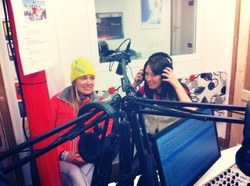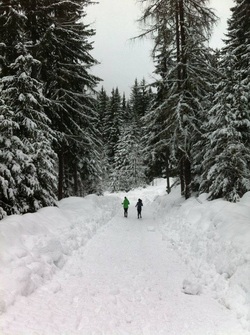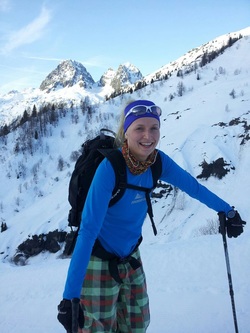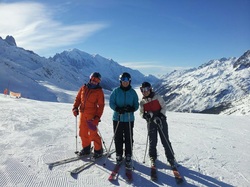 We’ve been doing everything we can to get media coverage over the past couple of months, to publicise our fundraising efforts and draw attention to our cause. So far we’ve done an interview with Summit Radio, got an ad in Chamonix Experience magazine and have articles in the pipeline for Women In Trade magazine, Trail Running magazine, Runner’s World, various local papers in the UK and hopefully an interview with the BBC. Phew! The one thing that people want to know, other than why on earth would you want to attempt this race in the first place, is how are you training and what preparation can you do for the Everest Marathon?  The truth is, we don't know! There are no standard training plans out there to tap into. In theory we should have a head start. We live in the French Alps at 1000m, we ski, swim, run & bike in the mountains all year-round, we regularly reach 2000-3000m of altitude during our sporting pursuits and between us have competed in marathons, triathlons & ultra-endurance races before. Surely it’ll be a walk in the park for a bunch of sporty, mountain-dwelling girls? To be honest I think most of us are finding it hard getting back into training since the usual wind-down from summer races, Xmas & New Year break and the bitter cold of mid-winter in the Alps. It’s hard to drag yourself out of bed when it’s -9C outside, pitch black and snowy. Our favoured off-road running trails are at worst inaccessible during most of the winter due to deep snow and at best are icy, slippery and downright dangerous and difficult to run on, even with crampons. Road-running is a poor substitute for us trail runners and it’s often still pretty treacherous in the winter anyway.  The answer is cross-training. There is plenty else that can be done if conditions for running are less than ideal, and in fact it’s by far the best way to train to avoid injury, strengthen muscles to help with running and improve all-round fitness. And there are so many great sports out there. Personally I decided to ease myself in gently in January and my rattly lungs are not a fan of the cold, so I have been staying indoors a fair bit. Training has consisted of 2 runs per week, 2 swim sessions in the pool, 1 cardio & core class and skiing when time permits. Cross-country skiing, snow-shoeing and ski-touring are excellent ways to cross-train for mountain runners and I could do with fitting more of that in, but so far I’m pretty happy with my training to date. I’ve even managed to shift my mince-pie spare-tyre!  It’s now only 3 ½ months to go until we leave for Nepal, but as long as we all follow a training plan that works for us, I’m sure we’ll be fit enough for the trip. The one big thing we can’t predict is the effect of the altitude on us all. We’re going to take advice on preparing for this and hopefully spend some time up at the 3800m Aiguille du Midi here in Chamonix beforehand. I mean sitting in the sun and drinking coffee at high altitude counts as altitude training, right? Sam x
2 Comments
Leave a Reply. |
Archives
October 2015
Categories |
 RSS Feed
RSS Feed
